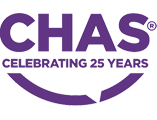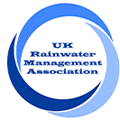A guide to Retrofit Rainwater Harvesting
11/07/2023
Newly constructed buildings are often packed with the latest and greatest in green technologies but retrofitting these technologies into existing building stock is often dismissed as too costly and complex to retrofit. This common misconception is especially true for rainwater harvesting which has traditionally been viewed as too complex to install into an existing building.
Rainwater Harvesting for existing buildings is often dismissed due to concerns surrounding a lack of plant room space, the need for costly excavations for rainwater storage tanks, or simply, a lack of knowledge that rainwater harvesting exists on a commercial scale. Whilst these concerns may have been valid 20 years ago, rainwater harvesting technologies have developed considerably during this time.
This article will showcase why these exists problems surrounding retrofitting a rainwater harvesting system have been eliminated through new technology.
Many are unaware that the UK is facing the prospect of water scarcity. The prospect of water shortages is caused by increasingly unpredictable weather patterns causing prolonged periods of droughts, increased flood risks and soaring populations which have all placed huge pressure on existing water infrastructure.
Recent announcements by the Environment Agency have suggested the UK uses around 14 billion litres of water per day and will need an extra 4 billion per day by 2050. The problem of water scarcity is already being felt by some regions in the UK which are now being classed as ‘seriously water stressed’ by the Environment Agency.
Most of the water which is used in both commercial and residential settings is made up of non-potable use rather than for drinking. ‘Non-potable’ water use is considered any water which is not fit for human consumption. In many buildings, potable water supplies are currently being used to flush toilets, supply irrigation systems and other vehicle wash activities. This is a huge waste of drinking water.
The need for widespread usage of rainwater harvesting cannot be underestimated. In fact, Rainwater Harvesting is a key part of the UK's plan for plentiful water.
In buildings without a rainwater harvesting system, rainwater is channelled straight into the existing sewage network and is transported many miles for treatment by a water company.
Rainwater Harvesting provides sustainable water supply by preventing perfectly clean rainwater from going straight into the traditional drainage network. Instead, rainwater from the roof area is channelled into a rainwater storage tank to be reused for a number of non-potable uses, including toilet flushing, laundry, vehicle washing, irrigation and some manufacturing purposes.
The sustainable water supply provided by a rainwater harvesting system also produces much less carbon emissions than traditional mains water supplies. Mains water supplies requiring complex transportation and treatment which a sustainable supply from rainwater harvesting does not require.

Rainwater Harvesting Systems for newly constructed buildings are made up of several components, including an above or below ground water storage tank, a control panel with filtration devices and a pump set.
The StormStation Rainwater Harvesting System is an above ground, self-contained unit which is designed to house all the above components in one unit. StormStation connects to existing roof drainage points (often referred to as down pipes) and contains a pre-tank filter, rainwater storage tank, controls and a booster set to provide a sustainable water supply. A sustainable water supply is boosted through a separate pipe network which is only used for the sustainable water supply.
StormStation eliminates the need for additional plant room space and costly excavations and can be easily installed during a renovation or refurbishment of an existing building.
Like any electrical system, maintenance of the rainwater harvesting system should be factored in to ensure the greatest water efficiency can be achieved. It is recommend rainwater harvesting systems should recieve a bi-annual service and a tank clean every 2 years. Read more about rainwater harvesting maintenance requirements here.
As well as rainwater harvesting, other water saving technologies should also be used to achieve greater water efficiency within existing buildings. Our friends at WaterWise offer a full list of water saving tips for businesses and homes.
Stormsaver Rainwater Harvesting Systems are backed by an unrivalled 20 years’ worth of knowledge and innovation. Just get in contact with our friendly team who are on hand to help.

My role as a Water Reuse Specialist means I get to keep up to date with all things water conservation. My favourite water saving tip is to turn taps off when brushing your teeth! I think rainwater harvesting and the water reuse industry is exciting, and I love sharing updates with our customers. View Matt’s Stormsaver profile here.
Terms & Privacy Policy Cookie Policy Site Map
Copyright © 2024 Stormsaver Ltd. All Rights Reserved.





